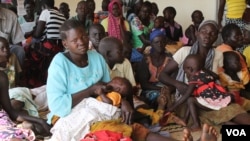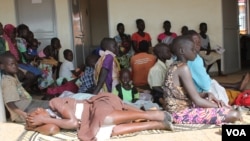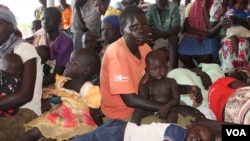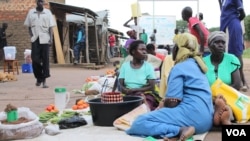It is estimated Uganda has one doctor for every 24,000 citizens. The nurse-to-population ratio is not much better, one for every 11,000 people, and much of that staff is concentrated in urban areas.
Now add 1.2 million refugees.
The massive influx of South Sudanese refugees into northern Uganda during the past year has strained the country’s already overburdened health care system. Health centers near refugee settlements in the country’s Adjumani district are overwhelmed, especially those providing maternity care.
The United Nations says Uganda took in more refugees than any other part of the world in 2016 as civilians fled conflict and hunger in South Sudan, and the influx continues.
Refugee Ester Ponne Charles arrived in northern Uganda eight months ago. She was pregnant and experienced complications during childbirth.
“Like myself, I was operated. If you do not have money, you may lose your life and the child too. Because there they want money. Without money, even medicine, you buy even the gloves yourself, everything in the hospital. So those are the challenges we are facing. Those ones who cannot even afford any coin, so they will just end up losing their lives,” Ponne Charles said.
Aid agencies and the government have worked to set up temporary health center structures in the refugee settlements to serve the huge female population of reproductive age, particularly pregnant women.
Severe medical staff shortages
One refugee settlement called Maaji now hosts 15,000 refuges, but has no doctor and only eight medical officers and nurses.
Tako Stephen is the Senior Clinician at Maaji Health Center 3.
“We are unable to conduct planned deliveries here because of the set-up of the place. The place is very small. We only conduct emergency deliveries and yet there are very many pregnant mothers here. So they have to walk all the way from here up to Maaji two for deliveries,” said Stephen.
Some of the referrals are also made to Mungula Health Center 3, where the senior nursing officer, Odaru Judith, says deliveries have more than doubled from 29 to 75 a month.
The health center only has six midwives.
“Our general ward is very small. It has only 10 beds, but the number of deliveries we have in a day, average is five, and when you take the labor room, it is so squeezed and small that it only fits one bed and at times you have three deliveries at a time, so making it very difficult. You will not even have a place where you can squeeze at least a carpet for a mother to deliver,” Judith said.
At the start of 2017, the government and U.N. agencies earmarked $1 million for reproductive health care in the refugee settlements, but the U.N. Population Fund says they actually need four times as much.








